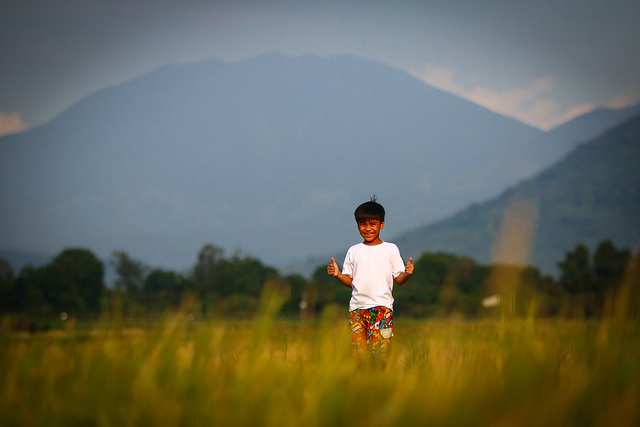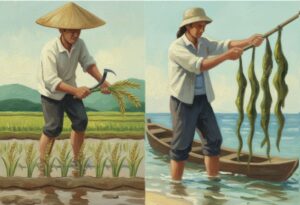The International Rice Research Institute’s new research outcome theme on developing environmentally sustainable solutions for rice systems addresses some of the challenges of improving productivity and income from rice-based systems while minimizing the environmental footprint.

Rice is probably one of the most strategic commodities for the world, closely connected with food security, economic growth, employment, culture, and regional peace. Being staple food for half of humanity or more than 3 billion people globally, it has been an instrumental crop for many countries not only to meet their food demand but also contribute to their economy by exporting the rice.
The world has made significant progress to improve rice production from 220 million tonnes in the pre-green revolution era to 729 million tonnes in 2017 to feed the growing population. The increase in the paddy production was attributed to many factors including an increase in the irrigated area, semi-dwarf high yielding rice varieties, and use of agrochemical, etc. However, the sustainability of the growth rate of the rice sector is a prime concern for the fast-growing global population to maintain food security, economic growth, quality of life, and social stability.
The rice production practices are very diverse and keep changing due to many drivers including the degradation of natural resources, biotic and abiotic factors, labor scarcity, availability of new machinery, etc. While the agriculture uses approximately 70% of the planet’s freshwater supply of which 40% goes for rice cultivation. Rice production is not only a large consumer of water; it also emits a significant amount of greenhouse gases (GHG) into the atmosphere, particularly methane, a more potent GHG than carbon dioxide.
The burning of rice straw causes severe air pollution and affects the quality of life. A trend of pesticide and fertilizer overuse degrades the quality of rice landscapes’ habitat for water birds, fish, amphibians, beneficial arthropods, and soil microbes. The same trend threatens the health of rural communities. However, rice environments also provide unique—yet poorly understood—ecosystem services such as the regulation of water and preservation of aquatic and terrestrial biodiversity.
The International Rice Research Institute’s (IRRI) new research outcome theme on developing environmentally sustainable solutions for rice systems addresses some of these challenges of improving the productivity and income from rice-based systems while minimizing the environmental footprint. The research outcome theme is focused on advancing the environmental sustainability of the rice-based system through transformative and multidisciplinary research and approaches. Focusing on the five core domains—air and climate, water, energy, soil health, and biodiversity and pest ecology—this theme uses sustainable rice landscape approaches to develop a futuristic outlook of rice management to achieve social, environmental, and economic sustainability.
One of the initiatives under this research program is the Direct Seeded Rice Consortium (DSRC). The DSRC, a public-private multistakeholder Research for Development (R4D) platform, was established to develop a comprehensive, science-based, agronomic package for direct-seeded rice (DSR) systems and improve the economic and ecological sustainability of rice-based systems in Asia. The consortium aims to strengthen public-private partnership which is required to address the complex issues of DSR, develop new innovative DSR practices including mechanization and precision crop and natural resource management practices, and catalyze the wide-scale adoption of optimized and sustainable DSR systems.
The DSRC is focused on (1) developing robust mechanized DSR systems with low seed rate to enable farmers to use good quality inbred or hybrid varieties in DSR, (2) developing precise weed, water and nutrient management practices including ICT-based decision tools, (3) identifying appropriate cultivars suitable for DSR, (4) reducing risks by combining agronomic and breeding solutions, crop modeling and GIS approaches by proper targeting, (5) supporting and strengthening the service economy of scale-appropriate mechanization and precision agriculture technologies (e.g. unmanned aerial vehicles or drones) to provide cost-effective access to capital-intensive machinery and technologies, (6) developing institutional capacity and knowledge sharing, and (6) catalyzing widespread adoption of mechanized and precise DSR technologies and practices.
This article was originally published in the DSRC Newsletter Vol. 1, Issue No. 2
______________________
Dr. Yadav is a water scientist at IRRI and Dr. Kumar is a weed scientist at IRRI.






